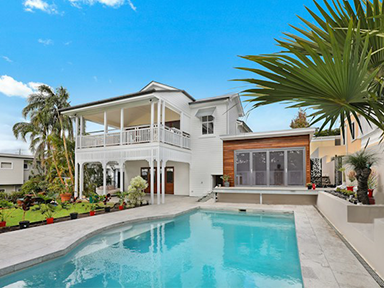With governments and other groups calling for granny flats to be used for rental accommodation, we take a look at what you need to know about insuring your investment.
They traditionally housed elder members of the family, hence the term ‘granny flat’ – and they have been built in Australian backyards for decades. These ancillary dwellings have provided a separate home for family members and are an option to keep families together but living independently.
NOTE: An ancillary dwelling (commonly referred to as a ‘granny flat’) is defined by the Residential Design Codes as a self-contained dwelling on the same lot as a single house which may be attached to, integrated with, or detached from, the single house.
Until quite recently, a granny flat could only be occupied by family/household members. But that has changed. Granny flats are no longer just for grannies. In most states, they can now be occupied by anyone – and used to generate rental income.
Research conducted by Gateway Bank a couple of years ago revealed 23 per cent of the country’s granny flats were used to generate rental income. Meanwhile, analysis of all residential properties across Sydney, Melbourne and Brisbane identified more than 655,000 sites suitable for the construction of a granny flat (according to CoreLogic, Archistar and real estate construction lender Blackfort).
CoreLogic also notes that a granny flat with an extra two bedrooms and an additional bathroom could add around 32 per cent to the value of an existing dwelling. For a house worth $500,000, the addition of a granny flat has the potential to add approximately $160,000 to the value of the property.
According to service.com.au, rents for granny flats range from $100 to $1,000 a week.
With granny flats able to be rented to anyone, various governments and other groups have recently been urging property owners to consider building one (or use an existing one) to help address the current rental crisis.
It’s a call several property owners are answering. Data from Oneflare and Airtasker showed requests for granny flat additions rose 67 per cent over the past year in New South Wales alone.
There are various considerations when looking at building or offering for rent a granny flat – from planning approvals and building permits to tax implications. But there are also insurance matters to consider. In particular, landlord insurance – which financially protects landlords against the unique risks that renting property presents.
When you have a second dwelling on the one property, the matter of securing appropriate landlord insurance isn’t cut and dried. Let us explain using three possible scenarios, which are all based on the granny flat being used as a rental property (either long-term or short-term).
Note: These scenarios relate to the use of granny flats as rentals. If you are looking at using another form of secondary dwelling, such as a studio or ‘Fonzie flat’ (garage conversions) as a rental, please chat to a member of our Expert Care team.
Scenario 1 – granny flat is located on the same site as the owner’s primary residence
As the granny flat is built at the same address as the residence, the structure is considered part of the main building, like sheds or fences. This means that building insurance for both the main residence and the granny flat need to be taken out with the one insurer – although this is a scenario to which the insurer would need to agree given part of the property is being used as a rental.
Heads up: A standard home and contents policy may not be suitable if the granny flat is being used as a rental. Typical home and contents policies have exclusions on cover when a property is being used for income-generating purposes. Even if the insurer will cover the property if it is being used as a rental, it is usually only through a specialist landlord insurance policy that the risks associated with leasing property (such as loss of rent or damage caused by tenants/guests) are adequately covered.
Scenario 2 – granny flat is located on the same site as an investment property
In this case, both the granny flat and the main property are being used as rentals.
If both properties are being used for the same type of tenancy, a single policy with building cover may be suitable. This cover may include financial protection for the building structures against a range of insured events plus cover for loss or damage to contents, legal liability and loss of rent provisions.
Scenario 3 – granny flat is on a separate title
If the property has been subdivided and the granny flat is on a separate title (it has its own address), then a policy with building cover may be suitable.The general rule is: one address = one building insurance policy.
Cover
Once a policy is issued for the granny flat, the full coverage is set out in the policy. When choosing a policy, you may like to consider the following features: loss of rent, tenant damage, legal liability, cover for insured events like fire, storm and flood and pet damage. Typically, a standard home and contents policy does not offer cover for tenant-related risks. Instead, consider looking to a specialist landlord insurance provider like EBM RentCover so you can cover all the risks you might face as an investment owner.
Conclusion
Using a granny flat as a rental may generate a good income for owners and help ease the current rental crisis. But, just like any other investment, it is wise to make sure you protect it properly with the right landlord insurance.
Which is the most appropriate cover will depend on several factors including where your granny flat is located and how it is being let. While it can be complicated, our Expert Care team is here to help guide you through any confusion. If you have questions about insuring a granny flat, please get in touch – 1800 661 662.
*While we have taken care to ensure the information above is true and correct at the time of publication, changes in circumstances and legislation after the displayed date may impact the accuracy of this article. If you need us we are here, contact 1800 661 662 if you have any questions.
You may also like
View all
If you’re one of these ‘short-stay’ landlords, or thinking of becoming one, it’s important to protect your investment with the right insurance...

Landlord insurance provides protection against common risks property investors face, but it doesn’t cover everything…

When it comes to insurance, misconceptions are rife. Read on as we set the record straight…



